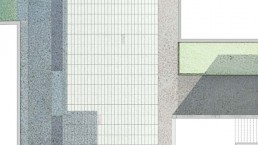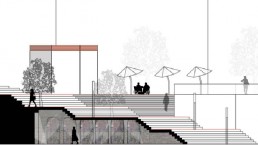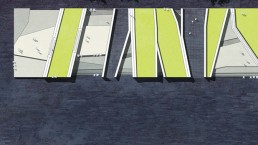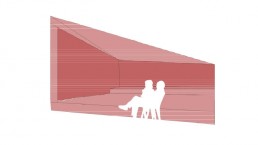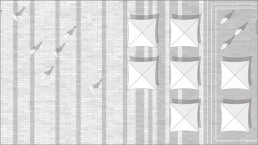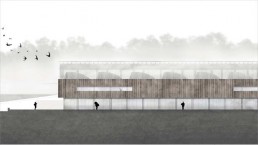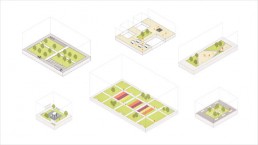LIVING. SPACES. CITY
MASTER THESIS
WS 17/18
'There will never be a definitive answer behind the question, how can we live well together. Therefore, there are other questions to formulate. For this purpose, it is necessary to consider 'living' not as a 'natural' activity, which has to be dressed only architecturally, but as a temporary result of permanent social negotiation processes. Only in this way it will be possible to create new living concepts beyond the existing social and structural forms.' Bührig / Knies, Wohnen ist Gestalt, in: wohnen ist tat-sache, Berlin, 2016, S. 133.
The masterthesis 'LIVING. SPACES. CITY. How do we want to live in the future? Transformation of the Schmidt-Knobelsdorf Barracks in Berlin-Spandau' is a theoretical and a design approach to current questions about inner-city living. For the former military area in Berlin Spandau, a possible spatial response to the diverse, currently changing, housing needs, is given. The aim for the new district is to develop a stable, socially mixed neighborhood, which is seen as the basis for an urban and liveable place - be it on a home, block, neighborhood or district scale.
As a central intervention, a differentiated framework of open spaces is created - parks, streets, squares and courtyards - in which diverse social interactions can take place. In addition, the social mix should be promoted with an affordable and diverse housing offer. Therefore, the development of the area should be initiated and controlled by city subsidiary fund companies. These companies should manage, on the block scale or in slightly larger units, the land and plots. Promoting the subdivision of the plots and passing them to different investors, construction companies and building cooperatives, based not on the highest possible offer but on individual, social and architectural concept. With the fund companies and a land assignment regulation in the hereditary building law, the city and the residents keep a longstanding involvement in the housing market policy.
In an atmospheric and identity-confering context, with the existing buildings and open spaces of the barracks, the design aims at a diverse structure of uses and actors. Based on the classic Berlin bloc typology, a dense neighborhood emerges offering different housing types, with freely accessible and neighborly courtyards. The high permeability and the small-scale parceling enables a gradual and flexible development of the area. The development of the blocs by the fund companies allows to establish the social mix as well as to develop in the different public and semi-public spaces stable neighborhoods.
| Author/s | Hannah Kast, Bente Rau |
| Phase | Master Thesis |
| Location | Spandau Berlin |
| Categories | Studio |
